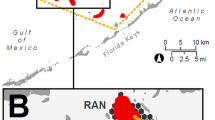
Overview
- The first book focusing on the ecological impacts of the Great Japan Earthquake and resulting tsunamis on coastal ecosystems
- Examines the Great East Japan Earthquake, one of the largest ecological disturbances in the past 1000 years Provides critical information on the ecological impacts of large-scale disaster events
- Suggests key ideas for conserving and managing coastal ecosystems and reducing the risks posed by natural disasters
- Includes supplementary material: sn.pub/extras
Part of the book series: Ecological Research Monographs (ECOLOGICAL)
Access this book
Tax calculation will be finalised at checkout
Other ways to access
About this book
This book focuses on the ecological impacts of the Great East Japan Earthquake and resulting tsunamis, a rare and extremely large disturbance event, on various coastal ecosystems in Japan’s Tohoku area, including sub-tidal and tidal animal communities, sand dune plant communities and coastal forests. The studies presented here describe not only how species and populations in these ecosystems were disturbed by the earthquake and tsunamis, but also how the communities have responded to the event and what types of anthropogenic activities will hamper their recovery processes.
In the ecological sciences, it is often argued that large disturbances are critical to shaping community structures and biodiversity in local and regional habitats. However, our understanding of these roles remains limited, simply because there have been few opportunities to examine and address the ecological impacts of large disturbance events. The scale of the 2011 Great East Japan Earthquake makes it one of the largest hazards in the past 1000 years. Thus, this book provides a unique opportunity to advance our understanding of the ecological impacts of large and rare disturbances and the implications of these events in the conservation and management of coastal ecosystems.
Following an outline of the Great East Japan Earthquake, the book’s content is divided into two major parts. Part I reports on studies examining the ecological impacts of the tsunamis on sub-tidal and tidal animal communities, while Part II focuses on terrestrial plant communities in Japan’s coastal Tohoku area.
This book will benefit all scientists interested in the ecological impacts of large disturbances on aquatic and terrestrial ecosystems in general, and especially those who are interested in the ecological management of coastal ecosystems and Ecosystem based Disaster Risk Reduction (EcoDRR).
Similar content being viewed by others
Keywords
Table of contents (24 chapters)
-
Front Matter
-
Aquatic Ecosystems
-
Front Matter
-
-
Terrestrial Ecosystems
-
Front Matter
-
Reviews
Editors and Affiliations
About the editors
Bibliographic Information
Book Title: Ecological Impacts of Tsunamis on Coastal Ecosystems
Book Subtitle: Lessons from the Great East Japan Earthquake
Editors: Jotaro Urabe, Tohru Nakashizuka
Series Title: Ecological Research Monographs
DOI: https://doi.org/10.1007/978-4-431-56448-5
Publisher: Springer Tokyo
eBook Packages: Biomedical and Life Sciences, Biomedical and Life Sciences (R0)
Copyright Information: Springer Japan 2016
Hardcover ISBN: 978-4-431-56446-1Published: 08 November 2016
Softcover ISBN: 978-4-431-56788-2Published: 05 July 2018
eBook ISBN: 978-4-431-56448-5Published: 28 October 2016
Series ISSN: 2191-0707
Series E-ISSN: 2191-0715
Edition Number: 1
Number of Pages: XI, 410
Number of Illustrations: 83 b/w illustrations, 60 illustrations in colour
Topics: Ecosystems, Marine & Freshwater Sciences, Natural Hazards, Fish & Wildlife Biology & Management



